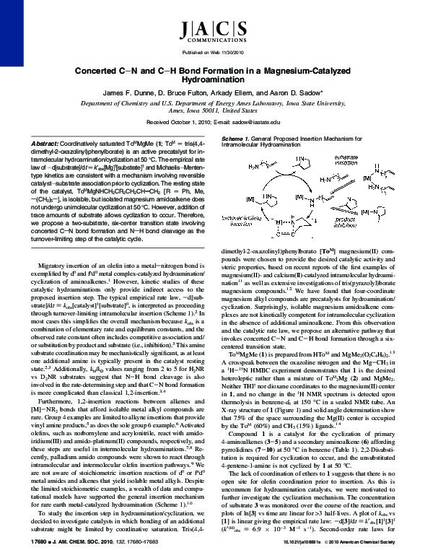
Coordinatively saturated ToMMgMe (1; ToM = tris(4,4-dimethyl-2-oxazolinyl)phenylborate) is an active precatalyst for intramolecular hydroamination/cyclization at 50 °C. The empirical rate law of −d[substrate]/dt = k′obs[Mg]1[substrate]1 and Michaelis−Menten-type kinetics are consistent with a mechanism involving reversible catalyst−substrate association prior to cyclization. The resting state of the catalyst, ToMMgNHCH2CR2CH2CH═CH2 [R = Ph, Me, —(CH2)5—], is isolable, but isolated magnesium amidoalkene does not undergo unimolecular cyclization at 50 °C. However, addition of trace amounts of substrate allows cyclization to occur. Therefore, we propose a two-substrate, six-center transition state involving concerted C—N bond formation and N—H bond cleavage as the turnover-limiting step of the catalytic cycle.
Available at: http://works.bepress.com/aaron_sadow/16/

Reprinted (adapted) with permission from Journal of the American Chemical Society 132 (2010): 17680, doi: 10.1021/ja108881s. Copyright 2010 American Chemical Society.